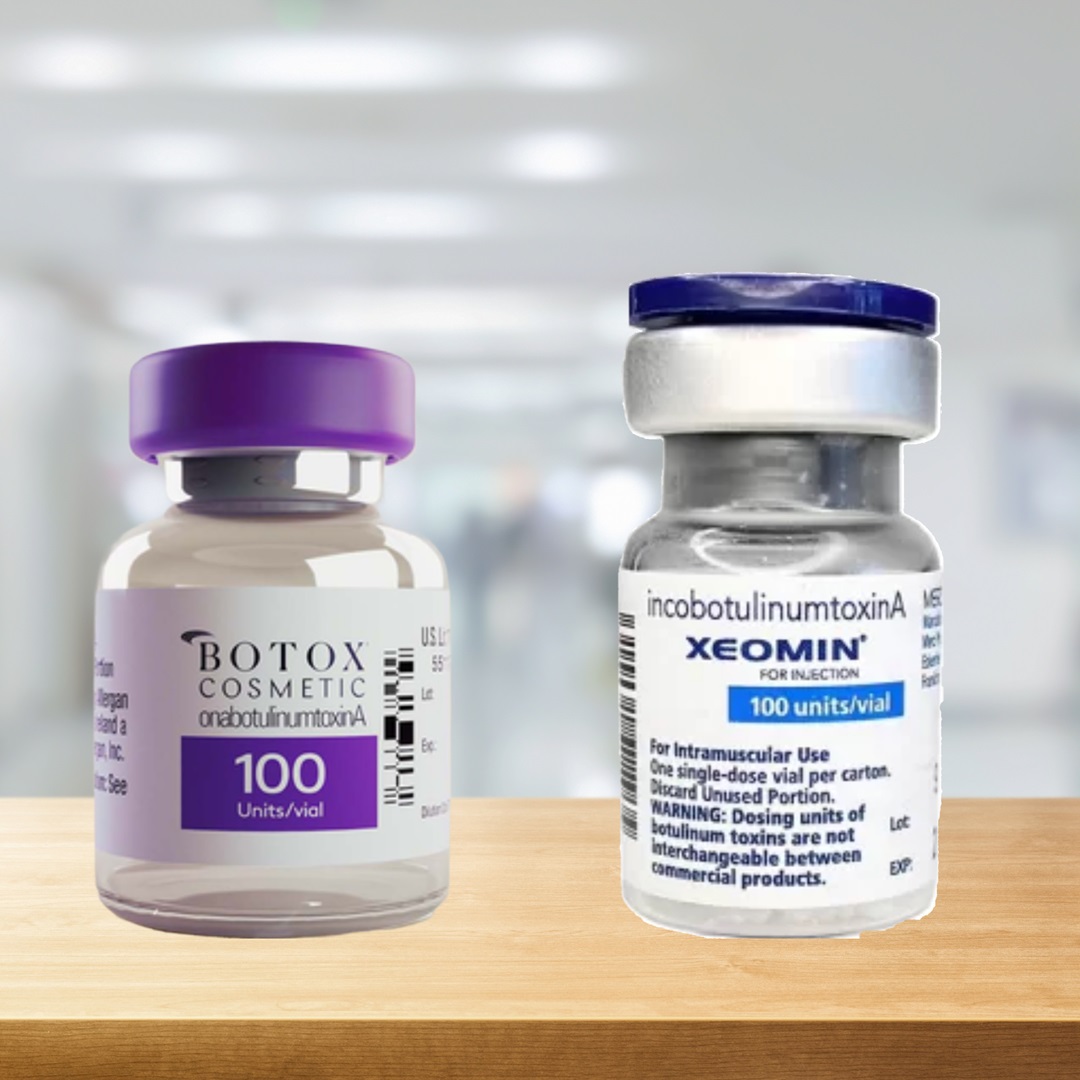by Stephen Luther, M.D.
Share

Choosing between Botox and Xeomin can be a big decision when you’re looking to reduce wrinkles and achieve smoother skin. Both are popular neurotoxins used in cosmetic treatments, but they have distinct differences that could influence your choice.
Both Botox and Xeomin belong to a class of medications known as neurotoxins, and their effects stem from a naturally occurring protein called botulinum toxin. The generic name for Botox is onabotulinumtoxinA, while Xeomin is known as incobotulinumtoxinA. Despite belonging to the same class, these two formulations differ slightly in their makeup.
Botox contains accessory proteins that protect the active molecule, whereas Xeomin is a “naked” form of the protein, meaning it doesn’t have these proteins. Understanding these generic names and differences is crucial to making an informed decision about which treatment might better suit your specific needs.
Pharmacology of Botox and Xeomin
The pharmacological action of both Botox and Xeomin involves blocking the release of acetylcholine at the neuromuscular junction. This inhibition prevents muscle contractions and results in a temporary reduction in facial wrinkles. Botox’s formulation includes accessory proteins that form a protective complex around the core botulinum toxin molecule. These proteins initially shield the toxin from immune system degradation, promoting its stability. However, they are not required for the toxin’s therapeutic effect and can sometimes lead to the development of neutralizing antibodies, potentially reducing treatment efficacy over time.
Xeomin, on the other hand, is crafted as a purer form of the toxin, stripped of these non-essential proteins. This refinement may enhance its safety profile by lowering the risk of antibody formation, thus maintaining effectiveness even after repeated administrations. Some practitioners prefer Xeomin for patients who may have developed resistance to Botox because of antibody production. Consequently, the absence of these accessory proteins in Xeomin signifies a shift toward a more targeted and consistent treatment with fewer components, appealing to those seeking a streamlined neurotoxin therapy.
These aren’t the only differences between Botox and Xeomin. Let’s examine how each stacks up across six key factors to help you make a more informed decision.
1. Effectiveness
When it comes to smoothing wrinkles and fine lines, both Botox and Xeomin show impressive results. They work by blocking the signals from nerves to muscles, which softens the appearance of facial lines.
- Botox is well-known in the cosmetic world; its effects typically start showing within three to five days and peak at around two weeks.
- Xeomin, sometimes referred to as the “naked” injectable, is free from complex proteins, which some experts believe might reduce the risk of developing resistance over time.
2. Safety
Safety is a top priority when considering any aesthetic procedure.
- Botox has been on the market longer and is regarded as safe when administered by a qualified professional, such as Dr. Stephen Luther. However, potential side effects include bruising, swelling, and in rare cases, an allergic reaction.
- Xeomin offers similar safety profiles but with a reduced risk of allergic reactions because of its purified formulation. Common side effects include mild discomfort at the injection site.
3. Duration
The longevity of the effect is an important consideration for many.
- Botox usually lasts between three to four months. Some users have reported the need for more frequent treatments if they metabolize the substance quickly.
- Xeomin has a comparable duration of effectiveness, lasting approximately three months. Some studies suggest that the duration may increase after several treatment cycles.
4. FDA Indications
Both Botox and Xeomin have specific FDA-approved uses.
- Botox is approved for various medical and cosmetic applications, including the treatment of glabellar lines (frown lines), crow’s feet, and excessive sweating.
- Xeomin is FDA-approved for the treatment of frown lines, but has fewer non-cosmetic approvals than Botox, potentially because of its more recent entry to the market.
5. Cost
- Botox tends to be slightly more expensive because of its brand recognition and extensive range of indications. Prices can vary widely based on the provider and geographic location.
- Xeomin is often marketed as a more affordable alternative, though the cost difference can be negligible once you factor in the provider’s expertise and region.
6. Injection Experience
Experience during the procedure can vary between patients.
- Botox injections are generally well-tolerated, with minimal discomfort. The procedure is quick, often taking just 10 to 15 minutes.
- Xeomin may offer a similar experience as Botox, with many patients reporting limited discomfort.
Still Unsure?
Both Botox and Xeomin are effective options for those looking to reduce wrinkles and fine lines. Your choice may depend on factors such as potential allergies, cost considerations, and specific FDA-approved treatments. To find out which option is best suited for your needs, consult with Dr. Luther at Symbios Health. Schedule a consultation today and take the first step toward achieving your beauty goals.





